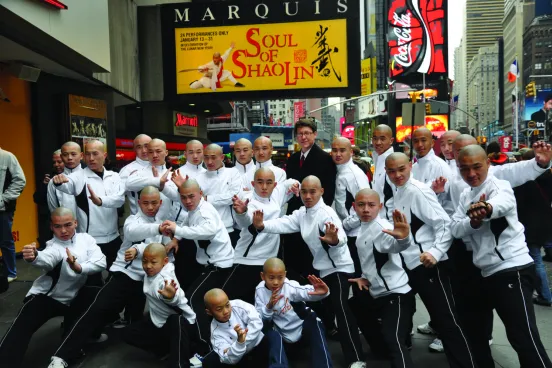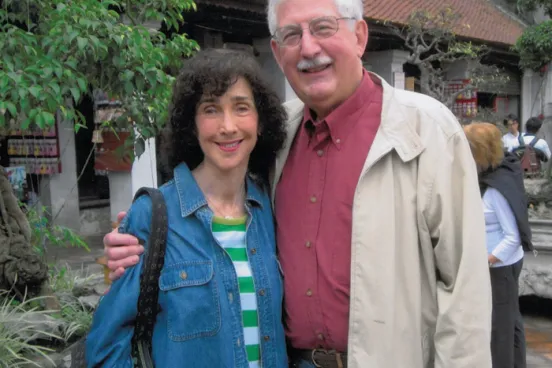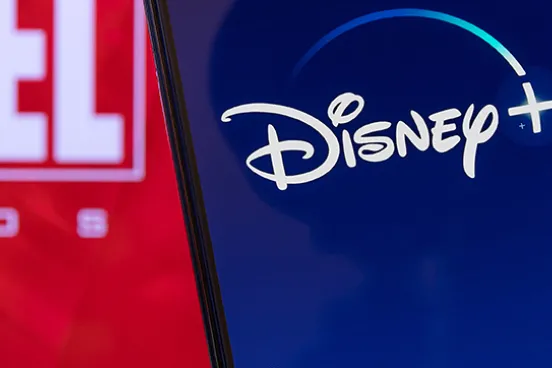Fans of indie movies once had a difficult time getting to see the films they loved: they were shown at arthouse theaters in big cities, then released much later at some video rental stores. Today, by contrast, is a relative heyday for indies and the audiences that love them, thanks in no small part to Michigan Law alumni.
A few years ago, Jason Janego, ’99, and his business partner were trying to figure out the best way to distribute a Kirsten Dunst movie called Bachelorette. Should it go to theaters, or video-on-demand? Which option would give them the best chance to reach audiences? It was one of the first releases by their then year-old company, and the stakes were high.
They chose option C, and their groundbreaking gamble—releasing it on video-on-demand, then a month later in theaters—proved to be successful and to influence the way other studios released independent films in subsequent years. Bachelorette (2012) became the first hit for RADiUS-TWC, the boutique arm of the Weinstein Company, of which Janego was co-president and co-founder.
“Basically, the idea is to give the consumer a bit more choice and to reach them where they want to be reached,” says Janego, who left the Weinstein Company in July and is in the process of setting up a new company with his business partner. “In doing so, we’ve had some success in shaping the way the industry views this sort of release.”
Indeed. In the United States and around the globe, you now can watch a movie on demand, often on the same day as its theatrical release. You can stream it through Netflix, iTunes, Amazon, Google, or other services. And, oftentimes, you still can escape the world for a couple of hours in the darkness of a theater, allowing a film to block out all the noise in your life and, just maybe, change the way you see yourself or the world.
Michigan Law alumni like Janego are leaders in this new wave of getting indie movies to audiences. John Sloss, ’81, a founder and partner of New York-based Sloss Eckhouse LawCo and Cinetic Media, has executive produced more than 60 films, including the Academy Award-winning The Fog of War and Boys Don’t Cry and produced the Golden Globe-winning Boyhood. Bruce Tuchman, ’89, president of AMC Global and Sundance Channel Global, has taken the Sundance Channel’s vast slate of indie movies to 80 countries.
“All these new avenues are open now for people who are interested in independent films. In addition to that, people who are passionate about independent film tend to be more passionate than fans of studio films,” Tuchman says. “Now they have a direct pathway to see all this great independent film, either on one of our channels or video-on-demand. This is a really exciting time to be in this industry.”
Show Me the Money
Of course, before the movies can be released to audiences, they have to get made in the first place. In some instances, such as Boyhood, that entails finding a financer that is willing to stick with a project over a very long haul.
“I think the complexity and interest of issues for lawyers is much greater in the independent film sector than in the studio sector,” Sloss says. His legal training, he says, ultimately helped him persuade executives of a multinational corporation to finance Boyhood over the 12-year period. “We structured the deal creatively as 12 one-year options so the funder did not feel like they needed to commit to12 years at the outset. However, if they didn’t, we could find a replacement on more favorable terms. That provision increased the likelihood that we could find a replacement if things didn’t work out with them.”
A movie he produced, 2007’s I’m Not There, was another challenging film for which to find funding. The stylized look at Bob Dylan’s career, with six actors portraying aspects of his life and music, took about five years to finance, Sloss says. “It took every bit of creativity we had to presell territories, borrow, go to shoot in a place where we could get the best rebate possible.
“That’s the great thing about working with independent films. There are less-firm structures and a greater opportunity for creative dealmakers to make creative deals,” Sloss says. With other films, he has combined equity with debt with presales with government subsidies. With many movies, he has worked out arrangements with participants in the film in which they are effectively given part-ownership in lieu of large upfront salaries.
While technological breakthroughs are helping independent movies get distributed widely, they also are helping some movies get made in the first place. For instance, a 2015 movie called Tangerine, a day-in-the-life of two transgender prostitutes, was shot entirely on iPhones with special lens attachments.
“The process of making films has been revolutionized by inexpensive technology,” Tuchman says. “Tangerine could not have been created 10 years ago, or distributed for that matter. Now, you can shoot on an iPhone and edit on an iPhone. The cost and the hurdles to entry have become very low.”
That’s one of the things all of these alumni love about working with independent films. New voices can break through in a way that wouldn’t be possible at major studios, with their focus on sequels and superheroes.
“So much has been codified in the studio world that there isn’t much room for improvisation,” Sloss says. “Sure, it’s more profitable to work in the studios, but it’s more fun to work with independents.”
Breaking Through the Noise
When the makers and distributors of independent films seek an audience, they’re up against those big-studio sequels and superheroes. They’re also competing with binge-worthy TV shows, smart-phone games, sports, and other entertainment choices.
“The opportunities for movies to get made are greater than ever before,” Janego says, “but at the same time, your choices are greater than ever before. In a world where you’re constantly inundated with options, if we don’t give the viewer a chance to see something right when they hear about it, they often move onto the next thing.”
One movie that broke through the noise while Janego was at RADiUS-TWC was this year’s It Follows. “It harkens back to an ’80’s horror film. We weren’t sure how the audiences would react,” Janego says. “It turns out that audiences are yearning for smart movies like this.” The movie’s quality—along with its presence on social media, strong reviews, and word-of-mouth—combined to make it a big success
for RADiUS-TWC.
Boyhood, which Sloss produced, as did Tuchman’s IFC Productions, not only found an audience; it grossed more than $50 million globally. The movie is an example of an indie that can compete against big studio productions, Tuchman says. “Studios are only releasing about 100 movies a year, so the overwhelming supply of movies that are being made is independent film. Independent film has always been considered a niche. It still is, but I’m finding more and more of an appetite is emerging even than just five or 10 years ago.”
That appetite is being filled with movies such as Searching for Sugar Man (2012), which won two of the top awards at the Sundance Film Festival; Wolfpack (2015), about brothers who were confined to their New York apartment by their parents and learned about the world through the movies they watched, which also won the top Sundance prize; the Amy Winehouse documentary Amy (2015), for which Sloss’s Cinetic handled domestic sales; and RADiUS-TWC’s Citizenfour (2015), a documentary about Edward Snowden, who leaked classified documents from the U.S. National Security Agency.
Movies such as Citizenfour remind Janego of why he was drawn to the industry in the first place; it’s a well-made movie, he says, about a significant topic. He and his business partner worked on the movie clandestinely for more than four months, because of the sensitive nature of the material.
“It was a once-in-a-lifetime movie,” Janego says. Experiences like that remind him of why he’s “still bullish on movies. There’s something special about sitting in a dark theater or your living room and experiencing a movie over 90 to 120 minutes. As good as TV is, I still think there is something uniquely special about movies.”






